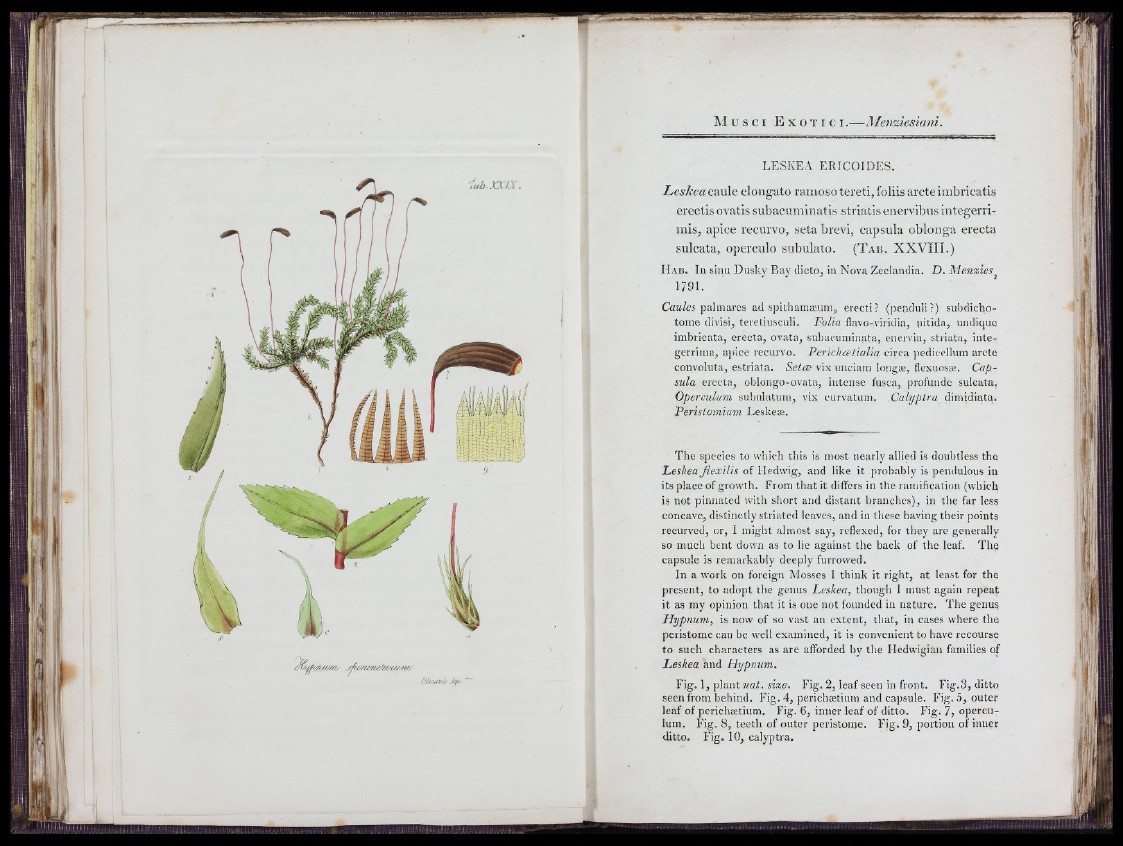
11
«f,
'U
‘iiî
11
A a b .x x a .
fyujafuh J(fi. ‘
f:
M u s e i E x o t i c i .—Menziesiani.
LESKEA ERICOIDES.
LesheacwAe. elongato ramoso tereti, foliis arete imbricatis
erectis ovatis subacuminatis striatis enervibus integerrimis,
apice recurvo, seta brevi, capsula oblonga erecta
sulcata, operculo subulato. ( T a b , XXVÍII.)
H a b . In sinu Dusky Bay dicto, in Nova Zeelandia. £). Menzies^
1791.
Caa/er palmares ad spithamæum, erecti? (penduli?) subdicho-
tome divisi, teretiusculi. Folia flavo-viridia, nitida, undique
imbricata, erecta, ovata, subacuminata, enervia, striata, integerrima,
a})ice recurvo. Perichoelialia circa pedicellum arete
convoluta, estriata. Selce vix unciani longæ, flexuosæ. Capsula
erecta, oblongo-ovata, intense fusca, profunde sulcata.
Operculum subulatum, vix curvatimi. Calyptra dimidiata.
Peristomìum Leskeæ.
The species to which this is most nearly allied is doubtless the
Lesitea Jlexilis of Hedwig, and like it probably is pendulous in
its place of growth. From that it differs iu the ramification (whicli
is not pinnated with short and distant branches), in the far less
concave, distinctly striated leaves, and in these having their points
recurved, or, I might almost say, reflexed, for they are generally
so much bent down as to lie against the back of the leaf. The
capsule is remarkably deeply furrowed.
In a work on foreign Mosses I think it right, at least for the
present, to adopt the genus Leskea, though I must again repeat
it as my opinion that it is one not founded in nature. The genus
Flypnum, is now of so vast an extent, that, in cases where the
peristome can be well examined, it is convenient to have recourse
to such characters as are afforded by the Hedwigian families of
Leskea and Hypnum.
Fig. 1, plant rixie. Fig. 2, leaf seen in front. Fig.3, ditto
seen from behind. Fig. 4, perichætiimi and capsule. Fig. 5, outer
leaf of perichætiiim. Fig. 6, inner leaf of ditto. Fig. 7, operculum.
Fig. 8, teeth of outer peristome. Fig. 9, portion of inner
ditto. Fig. 10, calyptra.
%
fl
I ■ I